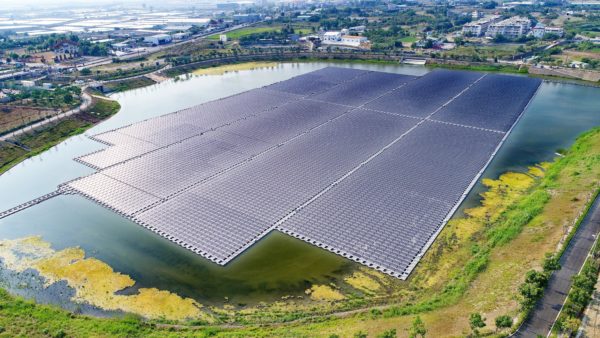pv magazine: What is New Green Power’s current project status and market positioning?
Andy Tang: We are now the leading project development, EPC, and O&M company in Taiwan. Here in Taiwan we have completed around 50 MW of PV, and if we include the projects we have developed in Japan it is 150 MW.
And what is your outlook for 2018?
This year we are aiming to complete around another 50 MW of PV projects.
How would you describe New Green Power’s projects in Taiwan?
Most of the projects are on rooftops, because ground-mounted projects are not easy to develop in Taiwan – due to complicated policy and regulations.
Besides rooftop projects, we are also doing floating projects in 2018 – around 40 MW in total across four or five projects. Some big ground-mounted projects will be started in 2019. There is a 30 MW [project] plus two 20 MW projects, so around 70 MW of ground-mounted systems next year.
Because regulations are quite complicated in Taiwan, investors are looking to work with local partners. One investor we work with is Macquarie Capital, and they are a good example of this.
Taiwan is not such a big island. How difficult is it to find suitable land for ground-mounted PV projects?
Our government has announced some special areas that are not appropriate for agriculture. So our government wants our investors to utilize this kind of land to build up PV systems. Here in Taiwan, there is no really good land for us to build ground-mounted solar PV projects on. Most of the land which can be used to develop solar projects, is not in very good condition.
And how do you deal with this low quality of land?
Most of the time we use concrete piles and enhance the height of the system to around two meters – at least – in order to avoid flooding issues and sinking land issues. Often the drainage systems there are not good.
And installing close to the coast can also be tricky. What do you do there?
Salt problems are another big issue. We have to use a special coating for the modules, which is salt resistant. Recently we used a module that was manufactured in Taiwan, mainly because of the FIT – there is a special FIT bonus if we use a module made in Taiwan.
But the modules we use pass strict and severe tests, and some have received special certificates from Taiwan, to make sure they can cope.
You also partner with Huawei, both for use in your projects but also as a distributor. Why did you make that decision?
We work with Huawei because after we conducted a lot of studies, we concluded that their products are very reliable over the long term.
What features in particular give Huawei’s products an advantage?
They are robust and offer products with multiple MPPT trackers. There is also the ease of installation.
But I think most importantly, Huawei has integrated its communications technology into the solar inverter – which is good for our monitoring systems, and for long-term operations and maintenance (O&M). At the same time their name brand is very good. They are a big brand.
You mention ‘robust’. There is salt spray, heavy rain, even typhoons and hot, humid conditions in Taiwan. Huawei inverters can survive these conditions?
Yes, that has not been a problem.
You also carry out O&M for your own and other arrays. How does this work?
Usually, we sign a contract for five years with the plant owner and renew this automatically if nothing special happens. At the moment we provide O&M services for around 70 MW of solar PV.
We integrate the string monitor design into our O&M approach, and from this perspective we can easily check which string is not in good condition and we can check – test – for that string. If our investor partner does not have string monitoring available then it is more difficult to check which string and which panel is going wrong.

You now have a big pipeline for 2018 and 2019 – including floating PV, ground-mounted, and rooftop. Will you work with Huawei on these?
Yes. With most of these projects we will cooperate with Huawei.
You also act as a distributor for Huawei. Do some customers have a preference for home-grown inverter suppliers?
Some customers don’t like to use mainland Chinese products. But from our perspective, we use a good product no matter where it is from. Huawei is a good PV inverter manufacturer, and they are very professional and can respond to our questions in time. We are very happy to cooperate with them. We are their biggest distributor in Taiwan.
This content is protected by copyright and may not be reused. If you want to cooperate with us and would like to reuse some of our content, please contact: editors@pv-magazine.com.
